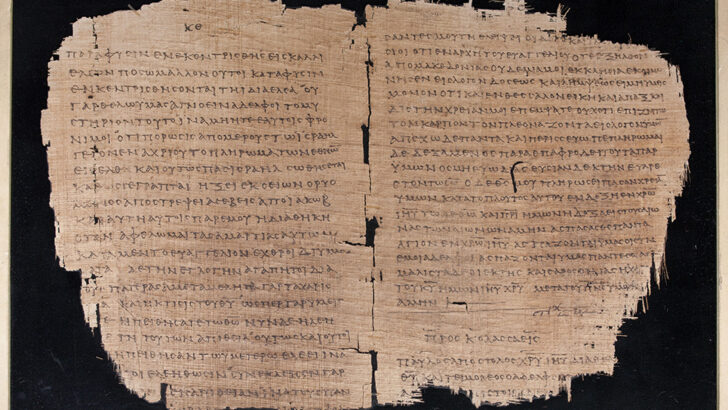The codex now for sale was once a part of the Bodmer Hoard, some of the items of which are now in the Chester Beatty library in Dublin.
A visit to the Chester Beatty Library in the precincts of Dublin Castle will reveal not only one of Ireland’s finest museums, but also a treasury of early Biblical manuscripts especially early Christian papyri. Anybody with the slightest interest in learning how we got our Bible should visit it.
When the American mining magnate Alfred Chester Beatty moved to Ireland in the early 1950s, bringing with him his important private library of Oriental and Biblical materials, he was warmly welcomed.
Today it still devotes its space to exploring sacred traditions from across the East Asian, Islamic and Western regions”
He built a museum, on Shrewsbury Road to house the collection, which eventually passed into the ownership of the people of Ireland. The library moved from the cramped original building to the grand space it now has in Dublin Castle a quarter of a century ago.
One of those who promoted the library and its establishment in Ireland was the contemporary Archbishop of Dublin Charles McQuaid. He was then engaged on a great church building scheme, seeing Ireland in the post-war world as a bastion of religious faith.
He was delighted that the biblical manuscripts would become a centre of biblical and early Christian studies among the leading institutions in the world.
Today it still devotes its space to exploring sacred traditions from across the East Asian, Islamic and Western regions.
Sacred
‘The Sacred Traditions Gallery’ on the next floor exhibits the sacred texts, illuminated manuscripts and miniature paintings from the great religions and systems of belief represented in the collections – Christianity, Islam and Buddhism with smaller displays on Confucianism, Daoism, Sikhism and Jainism.
Though there are lavish exhibits of the Koran and Buddhist texts, very special attention is also given to the biblical papyri. The exhibition is called ‘First Fragments’ and explores “some of the world’s earliest surviving biblical papyrus books”.
This exhibition includes pages from some of the earliest surviving biblical papyrus books”
Dating from the 2nd to 4th Century AD, these ancient pages reveal a world of book production and early Christian scholarship in Roman Egypt.
Histories
These papyrus fragments have much to tell us about the material histories of writing and bookbinding, textual histories of translation and transmission, and later object histories of ownership, publication and display.
Featuring some 80 objects from Roman Egypt, this exhibition includes pages from some of the earliest surviving biblical papyrus books alongside early Coptic bindings, ostraca (pieces of pottery used for writing), related papyrus fragments, illuminated Coptic manuscript pages and loans from the National Museum of Ireland.


 Peter Costello
Peter Costello Fragmentary papyri in the Chester Beatty.
Fragmentary papyri in the Chester Beatty.